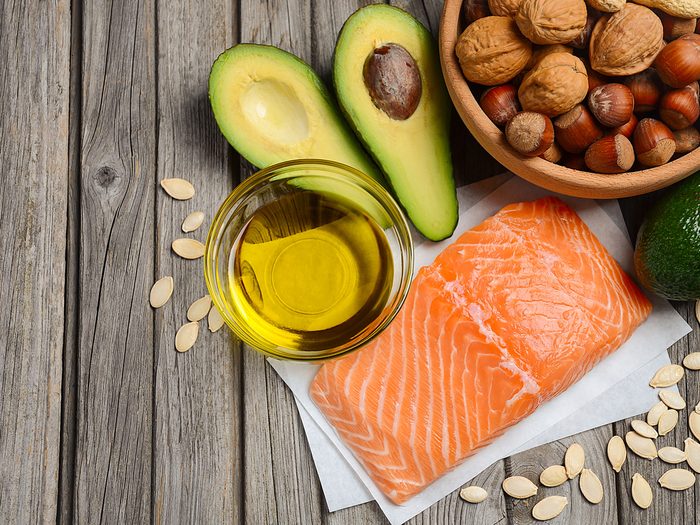
Swap in healthy fats
Fat may be higher in calories than carbohydrates or protein, but it satisfies your hunger—and that’s key to keeping your calorie count down. People tend to lose more weight and keep it off on a calorie-reduced diet that contains healthy fats rather than a diet that’s low in fat. That’s why the best diets for women over 40 include a source of healthy fat at each meal and snack. This could be two teaspoons of extra virgin olive oil, two tablespoons of raw nuts or seeds, or half an avocado.
Choosing the right fat is also key to staying healthy.
While fibre plays a part in reducing cholesterol levels, the types of fat you eat can also keep you healthy as you age. We’re talking beautiful, glowing skin, shiny hair and more! The key is to focus on unsaturated fats, particularly anti-inflammatory omega-3s.
If you replace the saturated fats in your diet—think butter, red meat—with unsaturated fats, a 2017 review in Healthcare suggests it can lower your cardiovascular risk. A small study in the American Journal of Clinical Nutrition finds that omega-3s also may be helpful in stimulating muscle protein synthesis to preserve muscle mass as you age.
Seafood sources of omega-3s such as salmon, mackerel, tuna, and fish oil supplements provide forms of omega-3s known as EPA and DHA, the types that your body can use most easily (and the types with plenty of research backing). Plant sources like walnuts, flaxseeds, chia seeds, and hemp seeds provide ALA omega-3s. Eating at least two servings of omega-3-rich fish every week covers you for your daily recommendation of 500-1,000 mg. If you don’t like fish, here are some omega-3-rich foods you can eat instead.
One word of warning: If you heart disease, consuming any oil (even olive) can be detrimental.
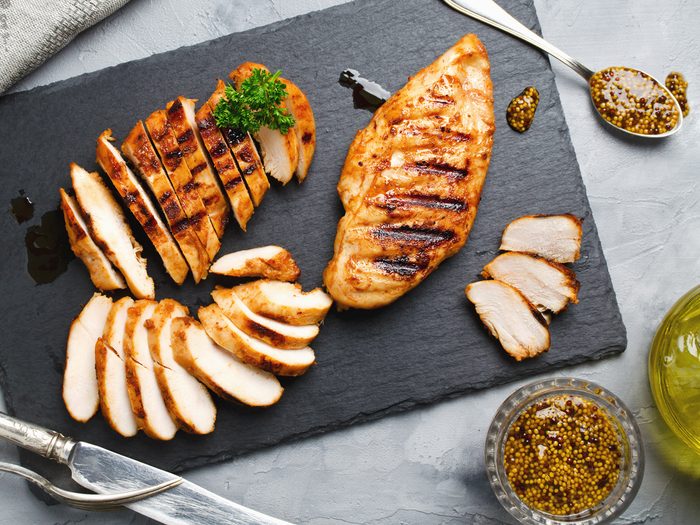
Get lean proteins spaced throughout the day
Getting enough of the right kind of protein (read: lean) is key to keeping your metabolism revved up and helping fill you up so you don’t deal with cravings as often. That means you can lose weight or maintain your weight without being constantly hungry. Protein-rich foods are among the top foods to eat to lose weight. For the best diet approach, make sure each meal and snack includes sources of protein such as chicken, fish, lean pork or beef, tofu, tempeh, beans, and lentils, or dairy products like milk, cottage cheese, and plain yogurt.
A study in the Journal of Nutrition found that people who are eating less than the recommended allowance of protein who up their protein intake lose less muscle as they get older. That’s key to preventing your metabolism from slowing down. It’s all about maintaining your muscle mass and even building more muscle with resistance exercise and getting enough protein.
Protein timing is also key. Many women tend to get most of their protein at dinner and very little earlier in the day. Are you having cereal or oatmeal for breakfast, salad for lunch and then a big piece of chicken or steak at dinner? Your body can only use about 30 grams of protein at a time, so you want to evenly distribute protein sources throughout the day.
To meet the 30 gram mark at each meal, try having an omelette at breakfast, 3/4 cup of plain Greek yogurt or cottage cheese at snacks, add a palm-sized serving of fish, chicken or tofu to your salad and keep the dinner portion of protein foods palm-sized too. Learn how nutritionists sneak more protein into their diet.
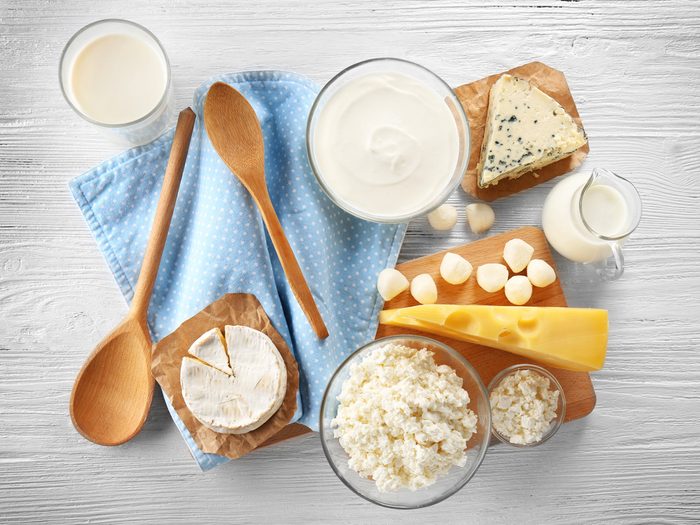
Key into calcium
The best diets for women over 40 rely on calcium: this key nutrient can help prevent osteoporosis. Your bones are constantly renewing themselves; old bone is broken down and new bone is made all the time. Up until about age 30, your bones are built up and broken down at a fairly even pace, but after that point, your bones start to break down at a slightly faster pace than your body can rebuild them. Calcium is essential for building new bone, so getting enough is important for boosting bone regrowth as you age. You also need to get enough vitamin D to make sure you’re absorbing calcium.
Without enough calcium and vitamin D, your bone regrowth can’t keep up with what’s being broken down, putting you at risk for osteoporosis, bone fractures, and broken bones as you age.
The National Institutes of Health recommends that adult women need at least 1,000 mg calcium and 600 IU vitamin D daily. Choose plenty of calcium-rich foods such as dairy products, fortified milk alternatives like almond milk, leafy greens, and tofu made with calcium sulfate.

Downsize portions
Everyone can use portion control help. Make use of them because keeping your portions in check is especially important for women over 40. As you get older, your metabolism starts to slow, so according to a 2008 study in the International Journal of Obesity, your body uses fewer calories to go through daily activities. That means it’s more important than ever to watch portions and avoid overeating.
How do you put portion control into action?
Be sure to read nutrition labels so you’re aware of what portion sizes look like for the foods you eat, and invest in some food-storage containers so you can pre-portion foods and stick to those servings.
Split restaurant meals, which tend to be much more food than you need to be satisfied, or go into a meal knowing that you’ll reserve half to take home for lunch the next day.
Make a point of eating slowly and stopping when you feel satisfied, rather than scarfing down a full plate of food before you can think about how full you are. Try these tips that’ll help you practice portion control.
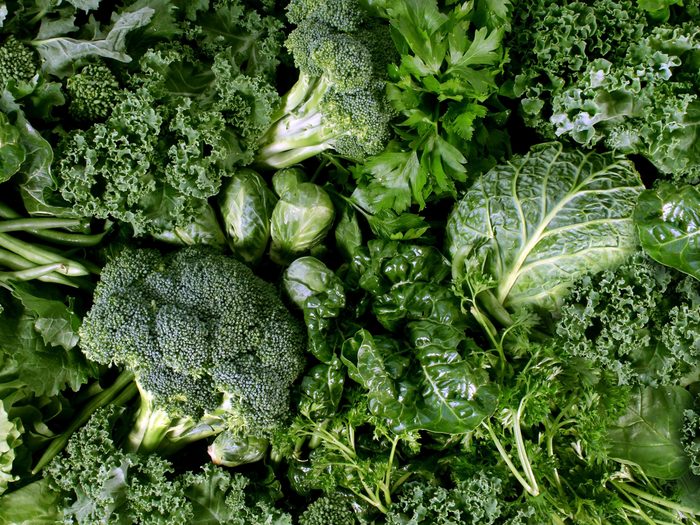
Shift your macros
Eating a balanced diet ensures that you get all the nutrients you need to feel full and satisfied, so that keeping portion sizes under control becomes much easier.
The Institute of Medicine recommends that adults consume 45-65 percent of their calories from carbohydrates, 20-35 percent from fat, and 10-35 percent from protein. As you age, we recommend focusing on boosting protein towards the higher end of that range, and keeping carbohydrates and fat at the lower end. Shifting your macronutrients towards more protein and fibre and less carbohydrates and fat can help you control calories and stay lean.
To achieve a better macronutrient ratio, don’t worry about counting macros with fancy apps. All you need to do is break down your meals like this: center your meals around non-starchy vegetables such as broccoli, cauliflower, lettuce, kale, peppers, zucchini, mushrooms and green beans. Fill at least half of your plate with these lower calorie, high-fibre foods to satisfy hunger and pack in the nutrition.
Make a quarter of your plate whole grains or starchy vegetables such as squash, corn or sweet potatoes, and a quarter lean protein. Serve with two teaspoons of healthy fats, and stick to fruit for dessert. This ensures that you get an appropriate balance of protein, carbs, and fat from nutrient-rich, filling foods.
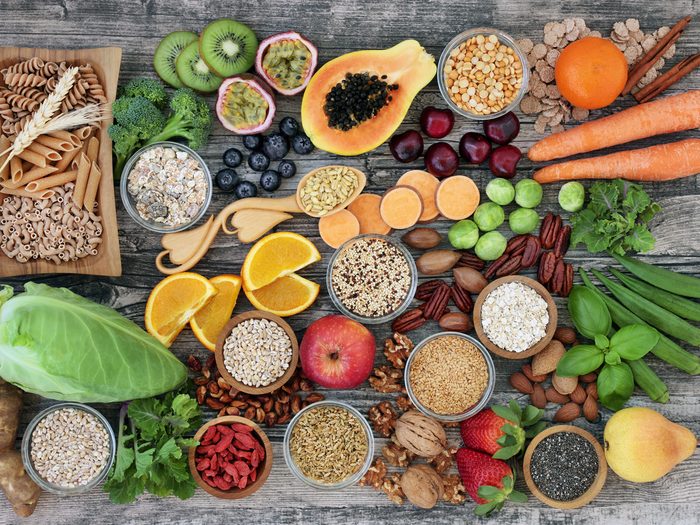
Fibre is your friend
Getting enough fibre is key to aging well and staying slim. Fibre not only helps keep you full so you can keep your portions in check, but it also helps lower cholesterol levels and keeps digestive system healthy. A 2012 study in the Journal of Nutrition found that increasing fibre intake by eating more whole grains can reduce your total and bad, LDL cholesterol levels, lower your risk for type 2 diabetes and heart disease, and help control your weight. That’s significant considering that according to the Center for Disease Control and Prevention says that heart disease is the leading cause of death for women in the United States, meaning the best diets for women over 40 are packed with fibre. Fibre can be found in whole grains like barley, brown rice, quinoa, oats, bulgur, millet, buckwheat, oat and wheat bran, and more. Fruits and vegetables are also great sources of fibre, as are many plant-based protein sources like beans and lentils.
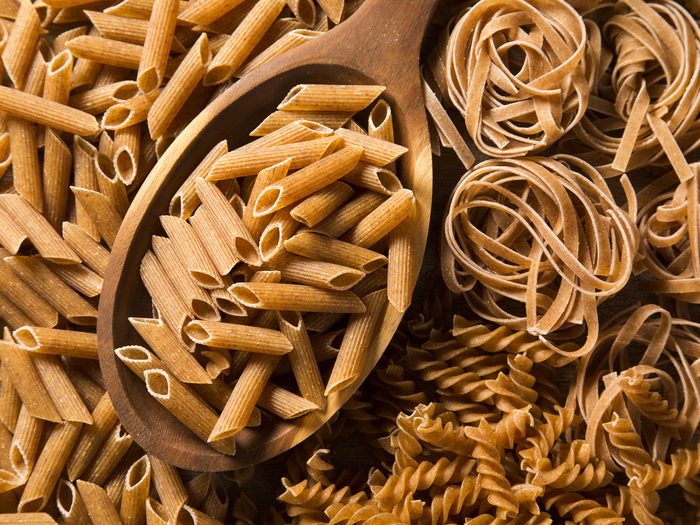
Switch out the fast-burning carbs
Keeping insulin levels under control is key to preventing weight gain, especially around the belly. From a health standpoint, preventing insulin surges may help prevent type 2 diabetes and some types of cancer.
If you want a slimmer waistline, your best diet plan includes getting rid of any fast-burning carbohydrates such as sugar, white bread, rice noodles and potatoes. Check out this list of seven carbs to avoid. Switch carbs like these out for slower-burning alternatives like berries, 100 percent whole-grain bread, whole-grain pasta, or pasta made from beans, lentils, or sweet potatoes. These slow carbs will provide you with slow, sustained energy and help fight sugar cravings. They’ll also help to keep insulin levels low so you can stay healthy and trim through your 40s and beyond.
Next, familiarize yourself with these superfoods that all women should add to their diet.
